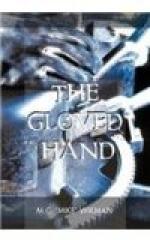Godfrey paused for a moment. Freed of its inessentials, in this way, the case was beautifully clear—and beautifully baffling. It was a paved way, smooth and wide and without obstruction of any kind; but it ended in a cul-de-sac!
“One thing is certain,” Godfrey went on, at last; “the murder was committed by somebody—either by Swain, or by one of the Hindus, or by some unknown. Let us weigh the evidence for and against each of them.
“Against Swain it may be urged that he was on the ground, that he had time to do it, and some provocation, though the provocation, as we know it, seems to be inadequate, provided Swain was in his right mind; a handkerchief which was tied about his wrist is found beside the body, and his finger-prints are found upon it. Miss Vaughan believed he was following them; he admits that he thought of doing so.
“In his favour, it may be urged that a man like Swain doesn’t commit murder—though, as a matter of fact, this is a dangerous generalisation, for all sorts of men commit murder; but if he should do so, it would be only under great provocation and in the heat of anger, certainly not in cold blood with a noose; and, finally, if the motion of the curtain Miss Vaughan noticed was made by the murderer, it couldn’t possibly have been Swain, because he was with us at that moment. You will see that there is a mass of evidence against him, and practically the whole defence is that such a crime would be impossible to one of his temperament. You know yourself how flimsy such a defence is.
“Against the Hindus, on the other hand, practically the only basis for suspicion is that such a crime might be temperamentally possible to them. They may have been on the ground, and the method of the murder savours strongly of Thuggee—though don’t forget that Swain admitted he could have tied that knot. Besides, if it was the Thug who followed them, he wouldn’t have made any noise, and most certainly he couldn’t have left the prints of Swain’s fingers on the body. But if Swain is right in his assertion that he saw the snake in the arbour, it is probable that the Thug wasn’t far away.
“Against an unknown it may be urged that neither Swain nor the Hindus could have committed the crime; but I don’t see how an unknown could either, unless he happened to be one of the three or four people in the world with finger-tips like Swain’s. And that is too far-fetched to be believable.
“But this I am sure of, Lester,” and Godfrey leaned forward again: “the murder was committed either by Swain or by someone anxious to implicate Swain. We agree that it wasn’t Swain. Very well, then: the person who committed the murder made a noise in following Miss Vaughan and her father so that she should think it was Swain who was following them; he picked up the blood-stained handkerchief, which Swain had dropped perhaps when he fled from the arbour, and placed it beside the body; and in some way inconceivable to me he pressed the prints of Swain’s fingers on the dead man’s robe. Now, to do that, he must have known that Swain was injured—the blood-stained handkerchief would tell him that; but he must also have known that it was his right hand that was injured. There was no blood on Swain’s left hand.”




